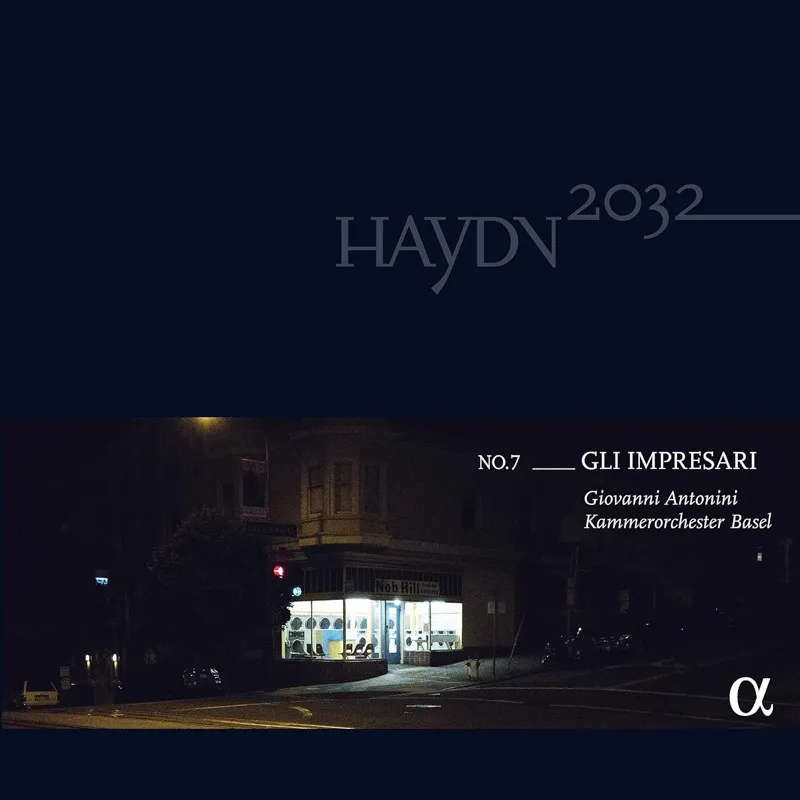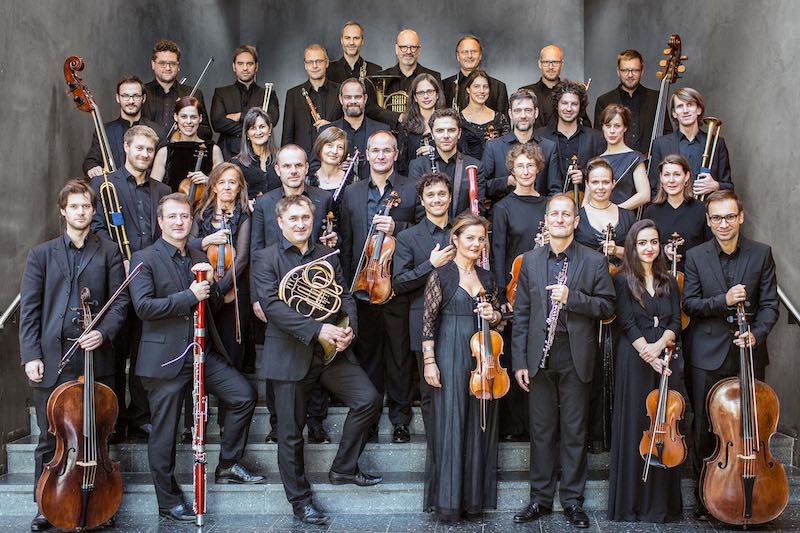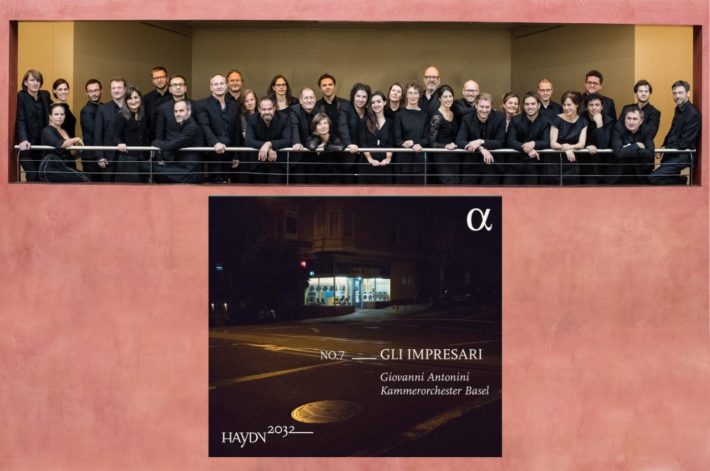The performance approach and general quality should come as no surprise to those who follow this Haydn 2032 series. For those unfamiliar with it, Alpha Classics came up with an outstanding idea for presentation of every single unit and the whole series – until we get to the year that will mark Haydn’s 300 birth anniversary – 2032.

Instead of releasing the 107 Symphonies currently known (who knows what else can be discovered by 2032), each volume is programmed around a theme, with one additional contemporary composer of Haydn’s era added. Each volume also includes photos by a single photographer from the “Magnum Photos” agency and background assays by conductor Giovanni Antonini and Musicologist Christian Moritz-Bauer. The whole series, we are promised, will involve two orchestras – Il Giardino Armonico (so far heard on volumes 1-4) and Kammerorchester Basel, heard on volumes 5, 6 and here.
This time around, the volume groups together music commissioned for theatre or other, non-symphonic circumstances. We have Symphony No. 65, the movements of which are taken from incidental music written for a play dealing with hunt and relationships (if that makes sense, apparently a big hit in its day), Symphony No. 67, which presumably gave movements to other unidentified play, and Symphony No. 9, most likely an instrumental overture to a secular cantata.
As we’ve already pointed out in these pages, Kammerorchester Basel is a fascinating ensemble; they are well familiar with period as well as modern instruments, switching them according to the period they play, be that baroque, late classical or early romantic symphonic work. In this case, it’s mainly baroque instruments, as can easily be detected by the rusty horns and more lushes oboes, both make the performance of Symphony No. 67 highly effective.

Kammerorchester Basel (©️ Lukasz Rajchert)
It’s not the first performance of this Symphony on period instrument, with a version by the Philharmonia Baroque Orchestra also convincing, but lacking compared to this version’s energy and sense of propose. The first movement (Presto) is charged through, offering a clear display of Haydn’s quick imagination and playful breakage with expectations (you may ask “What just happened” when the composer modulates to the minor episode at around 4:40 in the first track). The slow episode (Adagio) in the finale has never felt more Mozartian, with fine playing from soloists from the orchestra. A great addition to a not-so-large discography of this Symphony.
Another surprise, especially after hearing the excitement of 67, is that Symphony No. 65 is treated much more reservedly. Here the comparison is more handy available, with other comparable versions by much-admired Haydn conductors such as Hogwood (Decca), Fey (Haenssler) and Weil (Sony). In the first movement, Fey has the edge, both in general spirit and in balance, combining the strings, horns and oboes splendidly. Nothing wrong with the newer version, but in this case, even with all the acuteness of the performance, the balance of the strings with the other players is less smooth, with horns taking over the recording in long, high notes. The balance works better in the Andante, where the horns are expected to make a soloist dialogue with the strings (Fey is sluggish in this movement), but again a bit problematic in the Menuet section, where horns and oboe are recorded more forwardly than the strings. In the finale, where the horns’ role is again more significant, the results are satisfyingly given.
Finally, Symphony No. 9, a relatively early 3-movement piece, is given nothing but a charming performance, with some lovely passages by the oboe in the Menuetto and the flute in the Andante. The balance here is once again expertly done, and is more suitable to the interpretation, especially in the first movement.
The album also includes few movements from Mozart’s incidental music for ”Thamos, König in Ägypten”, from roughly the same period as Symphonies 65 and 67, and written for the same impresario as the latter. John Eliot Gardiner and his English Baroque Soloists gave a committed account of the entire music, 5 choruses included. Antonini provides us with the 5 orchestral movements only. As proven by his impressive account of Beethoven’s 9th Symphony, the Kammerorchester Basel with the NFM Choir are a terrific combination; With a performance as impressive as we have here, certainly one of the more exciting ever recorded of this music, one hopes this group will find the circumstance to add the rest.
Compliments are also appropriate to Alpha Classics, for making the important booklets of this ambitious series available for streaming listeners as well as purchasers of the physical CD or vinyl.
“Haydn 2032” – Vol. 7
Haydn – Symphonies No. 9, 65, 67
Mozart – ”Thamos, König in Ägypten” (orchestral movements)
Kammerorchester Basel
Giovanni Antonini – Conductor
Alpha Classics, CD ALPHA680




















